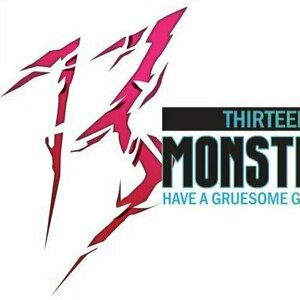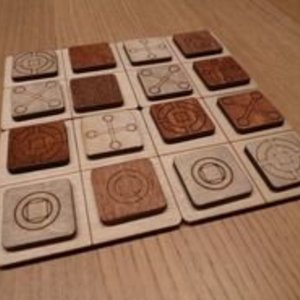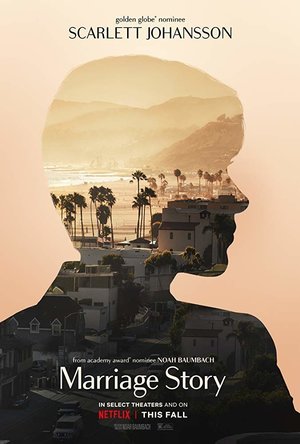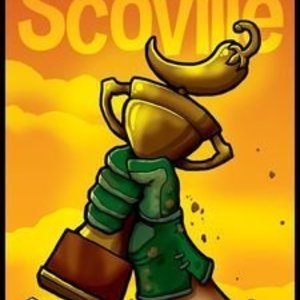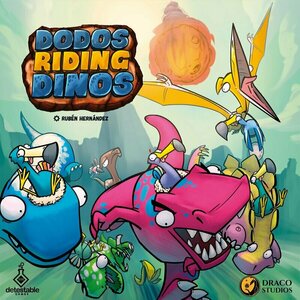
Video Delay Instant Replay with Slowmotion
Health & Fitness and Sports
App
Instant replay! Camera with adjustable delay on playback. Great for fitness and sports! Your...

GoodPlayer
Entertainment and Utilities
App
No need to convert the media files before playing it, GoodPlayer can play AVI, Xvid, DAT,VOB,FLV,WMV...
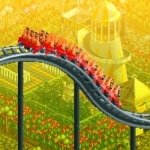
RollerCoaster Tycoon® Classic
Games and Entertainment
App
RollerCoaster Tycoon® Classic is a new RCT experience, combining the best features from two of the...

Einstein™ Brain Trainer HD
Games and Education
App
TOP PAID IPAD GAME: #1 in Italy, Spain, Netherlands, Switzerland, Austria, Belgium,... #2 in...
Purple Phoenix Games (2266 KP) rated 13 Monsters in Tabletop Games
Dec 5, 2019
As I mentioned in the intro, and as you can see in the first photo below, 13 Monsters starts out as a memory tile-flipping game and then becomes a bash-em’-up for domination. The goal of 13 Monsters is to end the game holding the monsters with the highest total Hit Points (HP). Now how you get there is another matter entirely.
DISCLAIMER: We were provided a prototype copy of this game for the purposes of this review. These are preview copy components, and I do not know for sure if the final components will be any different from these shown. Also, it is not my intention to detail every rule in the game, as there are just too many. You are invited to download the rulebook, purchase the game through the Kickstarter campaign running until December 20, 2019, or through any retailers stocking it after fulfillment. -T
To setup 13 Monsters, a randomized 9×9 grid of monster tiles are spread across the play surface with the longer title tile placed square in the middle (see what I did there?). Place the five d6 on the table to be used by any player. Determine the first player (whomever is the most beastly) and you are ready to play!
Turns are played in phases where you will initially be hunting the playing field trying to find matching monstersets to build a complete monster. Monstersets are horizontally matching tiles belonging to the same monster. So the top set is the head, the middle is the eyes, and the bottom is the body of the monster. This phase will continue in turns until multiple players have at least one monsterset. Things now start getting interesting.
Once you have at least one monsterset you can, before hunting from the field, offer to trade monstersets with other players. You may also use an ability named “Sacrifice,” which allows you to rearrange your monstersets to create a more powerful monster. Why would you want to rearrange? Monsters come in five elemental flavors – fire, water, earth, air, and ghost. Monsters with matching elemental monstersets are more powerful than those with mismatched elemental monstersets. This will come into play later when the monsters battle for supremacy.
Battles. Once you have a complete monster (head, eyes, body) you can, on your turn and before hunting, attack another monster. When attacking, both the attacker and defender will be throwing the five dice in hopes of ending with the highest total of pips of a matching set (like five 6s on the d6). The winner will then claim a monsterset from the involved monster (or separate monsterset) and add it to their collection. Monsters with more elementally-matching sets will be able to throw the dice more times versus a completed monster with mismatched elemental sets, so THAT is why using Sacrifice can make or break a battle.
There are other special abilities that are unlocked with different combinations of monsters: “Permafrost” allows the player to place a die on a tile that other players will not be able to flip on their hunting turn. However, once a battle is initiated all Permafrost dice are removed from the board to be used in the battle, so it is not a long-term tactic to be used. “Prophet” allows the player to flip over three tiles instead of the normal two tiles and can be very powerful when used correctly – you need to have a “Monster O.G.” which is a monster with all matching tiles belonging to the same completed monster. The final ability is “Supernova” and can only be used by a completed 13th Monster (the only Ghost-element monster, shown below). Supernova allows the player to sacrifice the 13th Monster in order to absorb (steal) a complete monster from any player and add it to their personal collection. The 13th Monster then leaves the game, but the controlling player will still receive the HP points for having collected and used it.
Play continues in this fashion until all tiles have been collected from the playing field. Once the final pair is taken, players are then allowed to declare one final battle against any opponent in hopes to bolster their final score. The player with the most HP shared among their completed monsters is the winner and ultimate Beast Master!
Components. Again, we were provided a prototype copy of the game, but from what I understand, the final production copy of the game will be very similar to this version if not exactly the same. What comprises the game is a ton of monster tiles and five dice. That doesn’t sound like a lot, and it’s not. But these are great quality tiles and normal quality dice (which I am hoping will become pink to match the main color found throughout the game). I love the overall art style. The art is what really pops out at you because the monsters are all uniquely weird and intriguing and kinda cute at the same time. I also very much appreciate that the team thought to include little bubbles next to the element icon on the tiles to indicate to which layer the tile belongs: head, eyes, body. Excellent touch. Overall the components are great, and the rulebook is killer. Outstanding work went into making this game visually stunning.
Is it a good game? It is certainly a very cool spin on Memory and adds modular monster building and player vs player battles where you can win each others’ components. I love it! Even though I am horrible at memory games, this gives me options once I do find a monsterset. I can trade and attack my way to building more and better monsters – but the dice have to be on my side, and I’m cool with that. If you are looking for something to add to your collection that is a brilliant hybrid of many different mechanics and looks absolutely incredible on the table, then please check out 13 Monsters. It rewards tactics, but also has that element of luck to help balance everything out. I’m a big fan!
Purple Phoenix Games (2266 KP) rated Mijnlieff in Tabletop Games
Mar 3, 2021
Typically I explain the theme here and what players’ end goals are. Mijnlieff is a two player abstract strategy game that has no real theme, though the art style uses lots of leaf iconography and the color scheme is very Autumnal. The winner of Mijnlieff is they who score the most points at the end of the game by constructing the most (or longest) sets of 3 tiles in a row.
DISCLAIMER: We were provided a copy of this game for the purposes of this review. This is a retail copy of the game, so what you see in these photos is exactly what would be received in your box. I do not intend to cover every single rule included in the rulebook, but will describe the overall game flow and major rule set so that our readers may get a sense of how the game plays. For more in depth rules, you may purchase a copy online or from your FLGS. -T
To setup each player will choose a color of tiles (or I guess just one player chooses and the other is stuck with the unchosen), and the back of the game bag is placed on the center of the table to act as the game board. Decide the starting player and the game may begin!
On a player’s turn they must place one of their tiles on one of the leaf symbols printed on the bag (the leaf symbols mean nothing other than to show where to place tiles). Easy. The first player will place their very first tile on one of the outermost leaf symbols to begin the game. The second player will then place their tile on the board depending on which tile was just placed by their opponent. You see, in Mijnlieff players cannot just place tiles willy-nilly, no! The tile immediately placed dictates where the next tile may be placed.
For example, if an opponent had just placed the N/S/E/W cross tile (Straight), then the next tile may only be placed on one of those leaves pointed at by the cross. Similarly with the diagonal cross (Diagonal) for diagonal leaves. The leaf tile with a solid circle around it (Puller) instructs the next player to place their tile on any leaf space that touches the original tile, even diagonally. Conversely, the leaf tile with a broken circle (Pusher) means the opposite: the next tile may be placed in any space that is NOT able to touch the original tile.
Players have access to two tiles of each flavor and they are attempting to rid their hand of tiles and create the most lines of three or four tiles for one or two points respectively. Once one player rids themselves of all their tiles the next player may lay just one last tile in an attempt to score more points. Whichever player earns the most points is the winner and, undoubtedly, will wish to play again immediately afterward.
Components. The version I was sent is the most recent XVgames Bagstracts edition in the fancy brown bag. The bag is great, and not only carries the components but doubles as the game board. I mean, I have not really seen that anywhere else. What a great and versatile component. The tiles are all very nicely painted wooden tiles with very clear iconography, which is much appreciated. The rulebook is fantastic and explains the game splendidly. Also included is a set of modular 2×2 mats that can be assembled in ANY fashion to create personalized game boards. I think this is a wonderfully-produced game with excellent components. The art is minimal but effective, and it has orange as a main color, so I applaud that choice as well.
The gameplay is what I would like to rave about here. My wife and I enjoy abstract strategy games together, but I have never seen her be absolutely magnetized to a game as much as she is to Mijnlieff. Right away, the first day I asked her to play it with me we ended up playing it eight or nine times that day. And you know what? We both really were jonesing to play some more. The game is relatively quick, with games lasting around 10 minutes each, but the neural exercises happening whilst playing is such so fantastic.
None of the tiles’ actions are difficult to understand, but each time a tile is placed my mind is racing with possibilities for my next turn. I do not suffer from Analysis Paralysis (AP), and my wife usually takes her times, but I do sit and think a bit more playing Mijnlieff. Sometimes you just need to play a tile to block the other player. You see, if you lay a tile and your opponent is unable to lay a tile legally according to your tile’s actions, then you get to place another tile ANYWHERE on the board. This could lead to a cascade of several tiles being laid on a turn, and THAT is what makes this simply an amazing design.
I now have four titles by designer Andy Hopwood that I will be reviewing, and if any of them are as thoughtful, beautiful, and well-designed I may have found another designer to add to my list of favorites. Purple Phoenix Games (plus my wife) give this one an incredibly respectful 11 / 12. I think what could make this game better is blinged out components. Everything in this bag is great, but Mijnlieff screams for high quality components and just sparkle everywhere. If you need a thinky abstract for two players from a smaller publisher and designer, I plead with you to grab a copy of Mijnlieff. I find it to be a superior design, quick-playing, and just hits all the right spots for my wife and me. And once you receive your copy we can record ourselves pronouncing the title and sending our recordings to the designer for him to choose the closest butchering.
BankofMarquis (1832 KP) rated Marriage Story (2019) in Movies
Jan 19, 2020
So, naturally, Baumbach (THE SQUID AND THE WHALE) was able to draw 2 of the better performers working in film today to play the leads - Scarlett Johannson and Adam Driver - and they deliver the goods (along with Laura Dern) - all 3 were deserved Oscar nominees - and the performances of ALL of the actors on screen are worth watching.
But...that's about all this film has going for it. For I found the first hour and a half of this film tedious with (at times) preposterous dialogue that looked good on paper - and was enthusiastically performed - but wrang (at least to me) as unrealistic. Consequently, this film is filled with well acted scenes that I kept saying to myself - "that was a well acted scene and that was an interesting choice that that actor made in that scene", but I found that these disparate scenes in this part of the film did not hold together as a movie. It seemed to me a series of acting class scenes and not a film.
And, for that, I blame Writer/Director Baumbach. This film, purportedly, parallels his divorce from actress Jennifer Jason Leigh (HATEFUL 8) and it shows. It's a little too "on the nose" and "inside baseball" for my tastes. The dialogue, at times, was "too cute" and the pacing was deliberate - which is a nice way of saying "slow".
What saves this film is the performances. Johannson dominates the first part of this film and she brings her "A" game, bringing a strength and awakening purpose to her character that will have you rooting for her - at the beginning. The first half of the film (for the most part) is Johannson's film and is what gives her her Oscar nomination (she won't win), but she deserves the nomination.
Laura Dern is also Oscar nominated for her role as Johannson's Divorce Attorney. Bright, funny, articulate and a shark in the courtroom and boardroom, Dern's character was fascinating to watch onscreen. While I thought this performance was "fine" and I was "okay" with it getting an Oscar nomination, I kept waiting for the "Oscar scene" for this supporting character - and about 2/3 of the way into the film this character had that moment - and Dern killed it. I would now say Dern is the deserved frontrunner for Best Supporting Actress (ironically, over Johansson who is ALSO nominated for Supporting Actress for JoJo Rabbit).
This scene propels the last 1/3 of this film into interesting territory - a place that this film had not gone to thus far. I was sucked into this last part and I think it is in no small reason due to the fact that this part of the film is driven (no pun intended) by Adam Driver's character. I've always found Driver to be a fascinating actor and while his character was not front and center much in the first part of the film, he commands center stage in the last part and I could not take my eyes off of his powerful performance. In a strong year of Best Acting performances, he shines and I would be happily surprised and satisfied if he won the Best Actor Oscar.
Alan Alda, as usual, brings an interesting character to the screen as does Julie Hagerty (remember her from AIRPLANE?) as Scarlett's mother. The surprise to me was the strong play of Ray Liotta as one of Driver's lawyers - it is his best work in quite some time and shows he does have some acting chops. Finally, good ol' Wallace Shawn (the "inconceivable" Count Visini in PRINCESS BRIDE) was fun - and annoying - in his scenes.
So...if you want to see some good acting in scenes that I am sure will end up as good scenes in an acting class performed very strongly, then check out MARRIAGE STORY. Just make sure you are well rested. A fast-paced romp it is not.
Letter Grade: B (for the strong performances)
7 stars (out of 10) and you can take that to the Bank(ofMarquis)
Purple Phoenix Games (2266 KP) rated Scoville in Tabletop Games
Jan 14, 2020
“Scoville” is exactly what you are thinking. Well, if you are a pepper fan or afficionado anyway. You see, Scoville, a term specifically made up by a fellow pepper enthusiast, is a test that measures the “hotness” of a pepper. The test was first used by Wilbur Scoville in 1912, whose namesake became the prodigious word used across the world to catalogue the finest and hottest peppers. The test has become so popular, that each year, farmers across the world make attempts to cross-breed peppers to make even hotter ones, just so they can stake a claim at the highest level of the Scoville scale.
Now that you have an idea of what our theme is all about, let’s talk gameplay. In Scoville, you play a pepper farmer. Your goal is to plant, sell, and breed the hottest peppers in all of town, suitably named, “Scoville.” There are 5 phases in each round of the game. Players complete these 5 phases in order until afternoon occurs in the game. This happens when a set amount of peppers have been sold by the farmers in the “marketplace” based on player count. These 5 phases: Auction, Plant, Harvest, Fulfillment, and Time Check, are described in the rulebook in a short, but thorough way. Each “morning” in the game, farmers take turns selling their peppers for victory points, planting new peppers in the open field plots, harvesting and breeding new peppers to sell later, and completing orders. It sounds like a lot, but the gameplay is one of the smoothest I have experienced in a worker placement style game. It’s unique in that it isn’t truly worker placement where you fill a space and another player is then blocked. The field in this case is wide open and provides ample direction for multiple strategies to get the best peppers on your turn. Once enough peppers have been sold based on the rulebook’s conditions, players enter the “afternoon” phase where they will sell peppers and fulfill any remaining orders they can. Once all players have completed this last trek through the 5 phases, victory points are added up. You’ll get varying points for all orders fulfilled throughout gameplay, points for special award plaques such as the hottest pepper award, points for unused Bonus tiles you are provided at the start (essentially little bumps in the game so no one person can run away with the scoring), and finally points for all money you have left from selling peppers in increments of $3.
While I have only scratched the surface of the breadth of gameplay this game offers, it is by far one of the simplest, yet most strategic, worker placement board games I have come across. The theme is in a very specific niche, yet is so whimsical and fun because of how the game is organized and crafted. It is very accessible for the whole family, and I say even usable as a first gateway game into the worker placement genre. The designer has done great not to let the theme weigh down the game to the point of that typical analysis paralysis that sometimes becomes the crux of most worker placement games. To clarify, actions such as “watering” or “fertilizing” the peppers could have been added to amplify the theme further, but are not included I believe because it truly doesn’t take away from the gameplay and imaginative idea that we are true pepper farmers. Just because we are “farmers” doesn’t mean we have to complete every task a farmer might do. We just have to feel like we are growing some really cool looking peppers (which the unique pepper meeples do the trick!)
While the theme is quite specific to a certain niche of gamer/pepper afficionado, it certainly makes up in fun gameplay that really anyone can enjoy, even us light-weight pepper eaters. It actually gives us light-weights a place to feel inclusive in this world of burn-your-face-off exhilarance that is so apparent on the faces of those that can tackle the likes of the dreaded Ghost pepper or Carolina Reaper. Purple Phoenix Games gives this one a hot 10 / 12. I hope you consider picking up a copy of this at your local game store and give it a try. You won’t regret it. And hey, good luck discovering all sorts of new and exciting types of those hot hot little death pickles!
Purple Phoenix Games (2266 KP) rated Dodos Riding Dinos in Tabletop Games
Apr 7, 2020
Dodos Riding Dinos is a hand management, dexterity, racing card game where if while you are playing it you don’t feel like you have portaled into a prehistoric Mario Kart board game, you have missed the point.
DISCLAIMER: We were provided a prototype copy of this game for the purposes of this review. These are preview copy components, and I know the final components will be a little different from these shown (upgrades!). Also, it is not my intention to detail every rule in the game. You are invited to download the rulebook, back the game through the Kickstarter campaign beginning April 28, 2020, purchase it from your FLGS, or through any retailers stocking it after fulfillment. -T
To setup, lay out the board in the middle of the table. Randomly deal each player a Dodo/Dino team card, give them the corresponding team player dodineeple, and deal each six cards. Place the meteoreeple, eggeeple, and bananeeple (jeepers) within reach. Determine the starting player order, placing the dodineeples on the corresponding hexes behind the starting line. The game can now begin!
Dodos Riding Dinos is played over a series of rounds until one player has either surpassed the finish line or is the furthest past the finish line at the end of the round. To accomplish this, Dinos will be moved using the cards dealt at the beginning of the game and that are drawn from the deck during play. There are three colors (types) of cards: blue (normal), red (aggressive), and green (fast). During a round, players will choose a red or blue card to be played. Once all have chosen, the cards are revealed simultaneously. Whomever has the active player marker will resolve their card first, moving their dino the number shown on the top of the card and resolving any special abilities on the bottom of the card. The round will continue this way around the table until every player has resolved their card.
That is, unless two or more players have revealed red cards during the round. When this happens, these dinos are enraged and can only move, canceling out any special abilities printed on the bottom of the cards. If a red card gets through, however, get ready for the crux of the game.
Usually these cards are those that introduce the dexterity element of the game. If a card mentions throwing a banana “with a damage of 2,” then the player will grab the bananeeple, anchor their elbow to the table, and try to throw the banana onto their opponents with a wrist flick. Those that are hit will take 2 damage, where damage is discarding cards from their hand. Should a player enact a card involving throwing the eggeeple, the player will move their piece aside, place the egg there, and flick the egg to the opponents without the assistance of thumb resistance. And finally, the meteor. To unleash the meteor’s fury, the player will hold the meteoreeple in their fist, hold their arm parallel to the game board at least 1ft above the surface, and drop the meteoreeple onto unsuspecting foes causing massive damage.
Play continues in this fashion until only one player has crossed the finish line at the end of a round or the winner is the player who is furthest past the finish line when the round is over.
Components. Again, this is a prototype that was sent to us so I cannot rightfully comment on the quality of components, but I can on the art style and direction. So I really love the presentation of the components. The game is colorful, and the art is cartoony and super-quirky, a style of which I am always a fan. I’m excited to see how these components will be upgraded as a result of a successful Kickstarter campaign, but even as is, the game is gorgeous and the components are fun to handle.
It is probably no surprise that I love this one. It is super simple to learn, gives the players tons of choices per round, and perfecting the meteor drop or egg flick is going to take lots of plays, so that’s a big winner for me. I was telling the publisher that even though the box recommends ages 8+ to play, we were able to fashion some house rules to allow our 3 year old to play and have fun with it. Simply play open-handed, with no special dino abilities, and give them endless mulligans. Works for us, but the original rules are even better for adults.
So if you are a fan of games where dinosaurs are involved, or dodos, or animals riding other animals, or dexterity games, then definitely check out Dodos Riding Dinos on Kickstarter. I think that I will be backing the deluxe version because I’m a sucker for KS upgrades and content. It’s a great game as long as you don’t take yourself too seriously and just have a great time flicking eggs and meatball meeples at each other.
Purple Phoenix Games (2266 KP) rated Cosmic Run: Regeneration in Tabletop Games
Jun 12, 2019
Space – the Final Frontier. Well, not anymore. You’re living in the year 2123, and space travel is not a novel idea. In fact, Earth has become uninhabitable, and the human race must find a new planet to call home! You and your team of explorers have taken to the galaxies to find a suitable replacement for the future of mankind. By befriending aliens and outmaneuvering rival explorers, your team will be credited with the discovery of new colonies on these distant planets. It’s a literal Space Race, so kick on that hyper-drive and take to the stars!
Cosmic Run: Regeneration is a competitive or cooperative dice-rolling game in which players are racing to earn the most victory points by being the first to discover new planets. It’s a Yahtzee-style push-your-luck game where you must roll certain sets of identical dice to advance your ships on the individual planet tracks. Dice can also be used to ‘hire’ aliens or find crystals, which can give you special abilities once per game. The planets must be discovered in a timely manner, though, because passing meteors could cause damage to, or even completely destroy, these planets – this is space, after all. Players earn victory points in three ways – by being the first to discover a planet, based on their position on a planet’s track if they are not the first to discover it, or by retiring sets of aliens. The player with the most victory points once all 6 planets are discovered is the winner! When playing solo, the game is played essentially the same way, with some minor differences. If the solo player discovers all 6 planets before any one is destroyed or before the meteor deck runs out, they win! However, if even a single planet is destroyed or they are not all discovered before the meteor deck runs out, the solo player loses.
I enjoy playing Cosmic Run: Regeneration as a solo game because it’s simple, but not easy. You’re just rolling dice, but you need a strategy. Do you try to advance quickly on the easiest tracks, or do you commit dice to more difficult tracks and hope that the dice rolls will be on your side? Be careful – once you commit a die to a certain track, it cannot be moved. I’ve played so many games where I commit dice to Planet 2 (2-of-a-kind) and end up rolling 3 more of the same number that could’ve been used on Planet 5 (5-of-a-kind) if I’d just committed them there in the first place! A lot of the game is dependent on the luck of the roll, but I feel like you still need a solid strategy to be successful. There’s a good balance between the two – I still feel like I’m in control of the game even though I can’t control how the dice will roll.
The one main difference between solo and group play is that the solo player is allowed to spend VPs to create ‘forcefields’ around planets. This is because in group play if a planet is destroyed, players score points for their track progress, and the game continues. For the solo player, however, if a planet is destroyed, the game is over. When playing solo, I can choose to spend either 5 or 10 VPs to create a forcefield around either 1 or all planets to protect them from meteors for one turn. Without this option in solo play, it would be impossible to win. The first 4 cards of the meteor deck are guaranteed to hit 4 different planets, so right off the bat you are starting at kind of a disadvantage. Each planet only takes 3 hits to be destroyed, so depending on how well the meteor deck is shuffled, the game would be over quickly if I weren’t able to create forcefields. It all comes back to strategy – you have to decide when to spend those VPs and what planets need protecting at any given point in the game.
That being said, scoring VPs is not really easy in solo play. To score points for a planet, you have to physically reach the planet surface – and that can take a while depending on how well you are rolling. You can hire/retire aliens for VPs, but alien cards have a die cost, so if you are hiring aliens all the time, those are dice you are not using to advance on planet tracks. And each turn, planets get closer to destruction if you don’t advance on their tracks fast enough. You can earn VPs when you land on a VP token space – you do not pick up the token if you pass it, you must land exactly on it. So all in all, you can’t afford to protect every planet every turn. You have to strategize carefully about how to risk your hard-earned VPs. The most frustrating thing is when I pay VPs to protect a planet that isn’t even the one that gets hit! 5 VPs gone that I usually can’t get back in a single turn. But that’s all part of the push-your-luck isn’t it? There’s no reward without risk, and sometimes it’s better to be safe than sorry. I’m usually not a very risky game player, but in this game I have to be. Playing it safe is not an option when I’m racing against the meteor deck.
Cosmic Run: Regeneration is a game of strategy with some healthy helpings of luck and risk-taking. You need a solid strategy, but one that is flexible enough to adapt to your dice rolls on any given turn. No game is a guaranteed win – if I win it’s usually at the last possible second. This game is easy to play, but not necessarily easy to win and that’s what keeps me coming back to play. Even as a solo game, it’s engaging and I think it’s pretty fun too!
https://purplephoenixgames.wordpress.com/2019/01/25/solo-chronicles-cosmic-run-regeneration/
